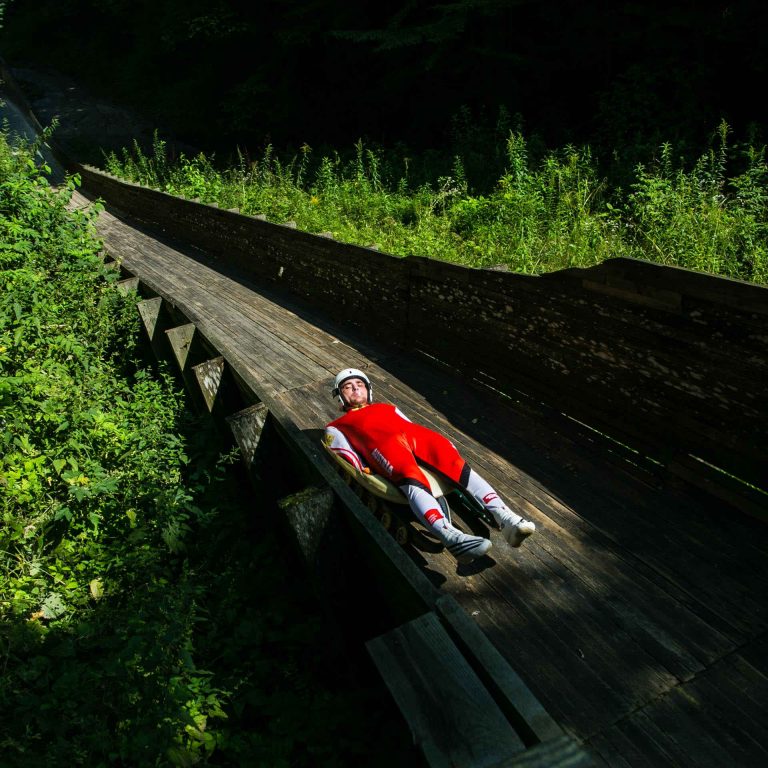When luge sports were just getting off the ground in Switzerland, Ukraine already had its own luge track in the city of Kremenets, Volyn. Nowadays, it is the only place in the country where lugers can train. Athletes fondly refer to Kremenets as the cradle of luge sports in Ukraine.
The luge track was built in the 1830s. At first, it was used for leisure purposes by tourists and local residents, as well as winter holidaymakers. Luge began to develop as a sport in Ukraine during the 1960s.
Although athletes from the Olympic team train here, the run is far from perfect. Government funding is irregular; potential investors make their own demands. Due to the lack of infrastructure in Ukraine, luge sports are only practiced in Lviv and Kremenets. The latter is the country’s only professional training track.
The only one & the oldest one
The first luge track in Kremenets was built back in the 19th century: a 400-metre slope with two start ramps. A new track appeared in the 1970s. At that time, Kremenets even hosted the USSR’s second All-Union Rural Games. However, even this one gradually fell into disrepair. Finally, in the 2000s, with the support of the International Luge Federation and the Ukrainian Ministry of Youth and Sports, 1,000 metres of track were built (out of the projected 1,157 metres).
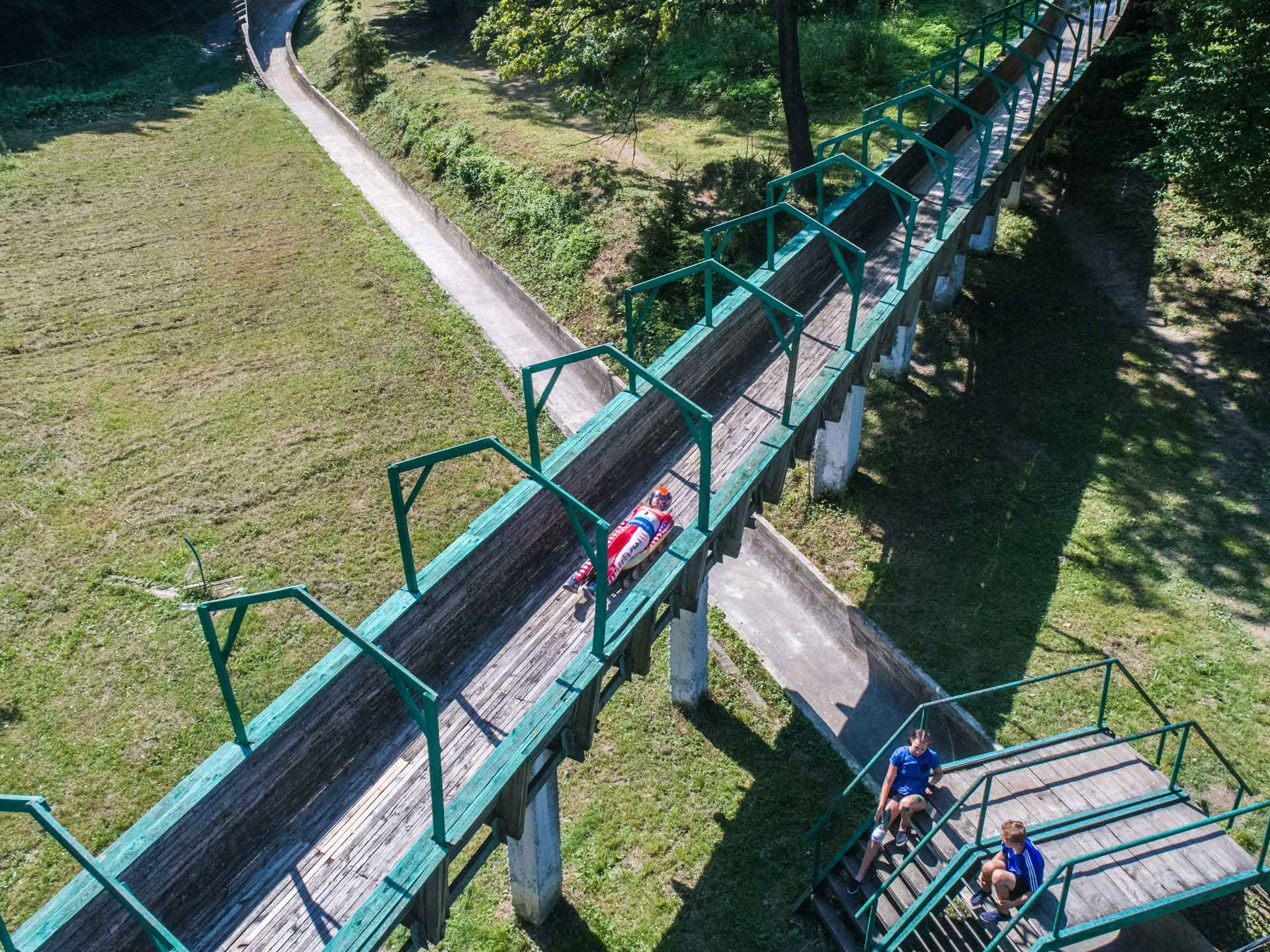
It was then, in Kremenets, that the Ukrainian street luge championships were born. Gradually, athletes from Europe began to arrive. Luge sport championships are held here in winter; in summer, it is a venue for street luge competitions. Student athletes regularly train here. The location chosen for the track in Kremenets has proved to be a success. Athletes say that even in the spring, when the snow begins to melt everywhere else, freezing temperatures remain here and allow them to continue training. Andriy Mandziy, a luger from Kremenets, confirms:
“This place is like a small refrigerator, it always stays cold.”
For decent luge conditions, temperatures must be below freezing, with 30-40 centimetres of snow. In recent years, the winters have been warm, so snow is shovelled onto the track.
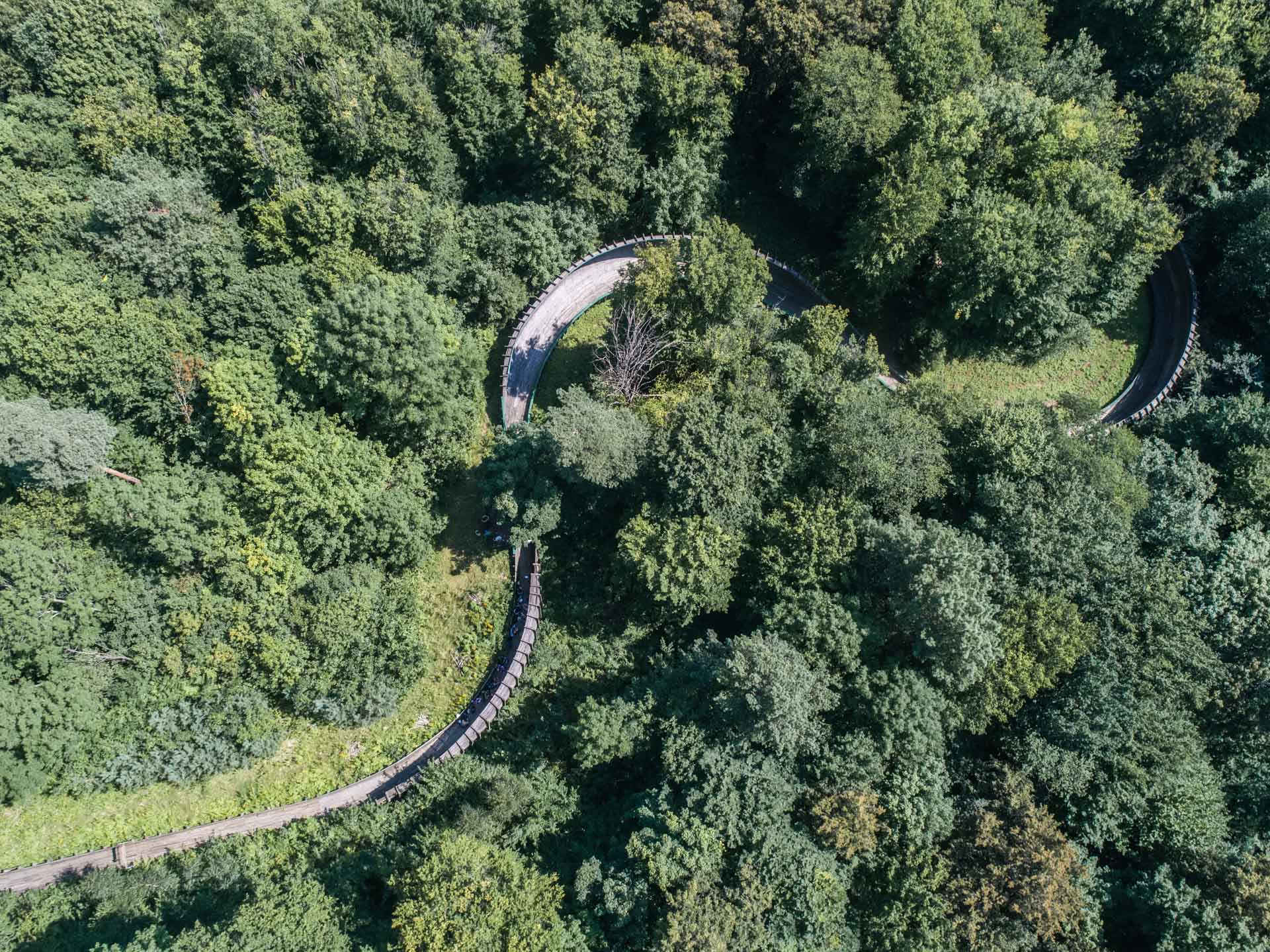
Restoration of the track
Exactly who is responsible for developing the sport and the track, as well as supporting specialist sports schools? Technically, all of this is managed by the ‘Kolos’ (‘Colossus’ — tr.) sports club. Due to territorial reforms and the restructuring of public finances, the question now hangs in the balance.
The president of Ukraine’s Luge Federation, Anatoliy Malyshchyk, explains that the Ukrainian Social Insurance Fund has stopped supporting youth sports schools, which belonged to sports clubs. They were transferred out of the national budget and placed on local budgets. At the regional level, a decision was made to combine three winter sports schools: Kremenets luge school and ski jumping school, and Ternopil biathlon school.
“Technically, this organisation exists on paper because the owner of these structures is the youth sports school and the ‘Kolos’ sports club. The club, with the funds currently at its disposal, has been supporting this entire sports organisation for two years now, allowing children to train there as well as holding all of our national competitions.”
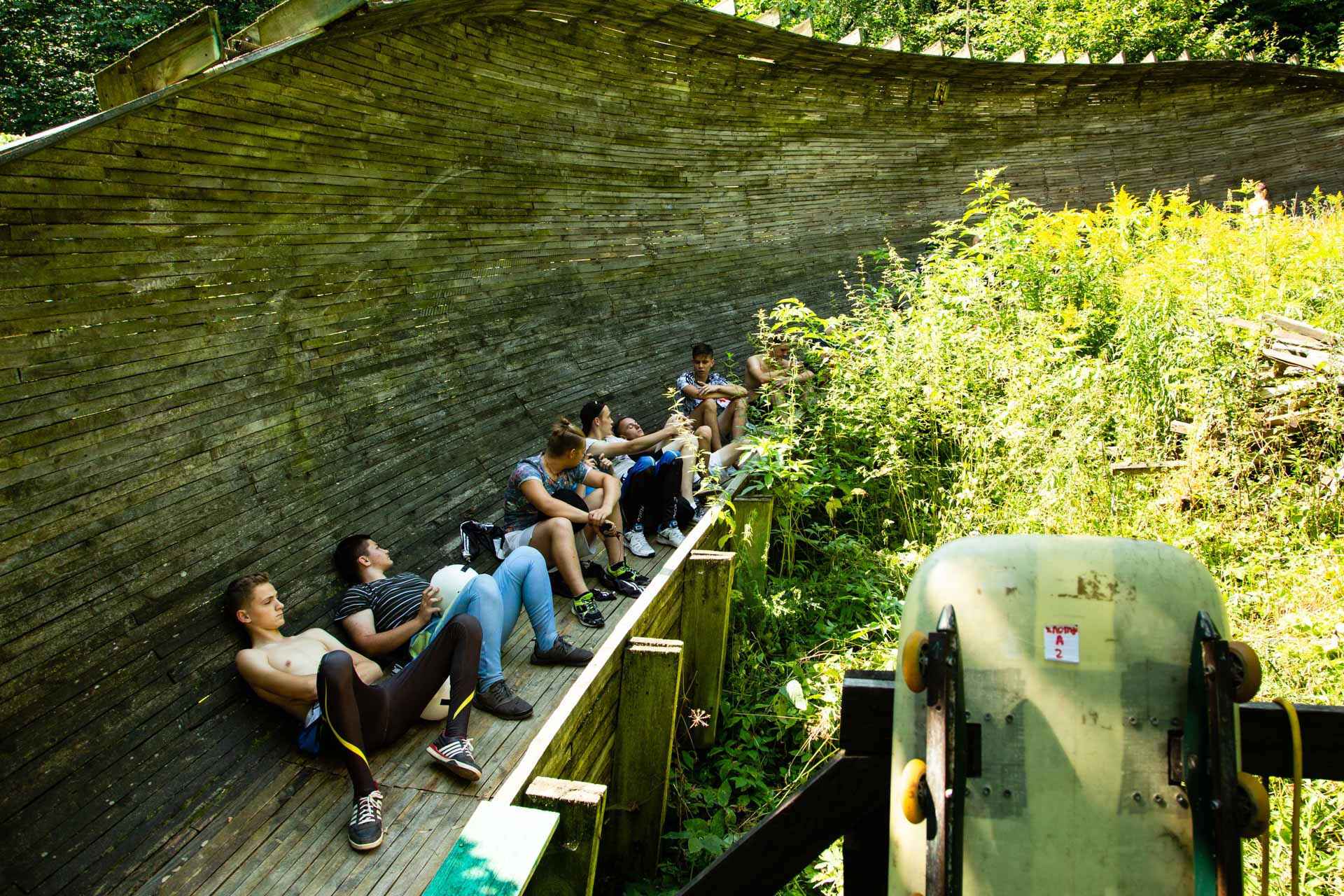
Anatoliy says that despite all the difficulties, children still need a good athletic education.
In the past two years, the condition of the wooden parts has deteriorated. Half of the track needs to be replaced. For the athletes’ safety, these areas are not being used for competitions, though training continues there. The track is maintained in its current state of repair, but even the supporting structures need to be replaced.
Ivan Baik, a Lviv trainer who works with junior athletes, says that the Kremenets track is sustained by international competitions.
“In better times, 14 or 15 countries would come to participate.”
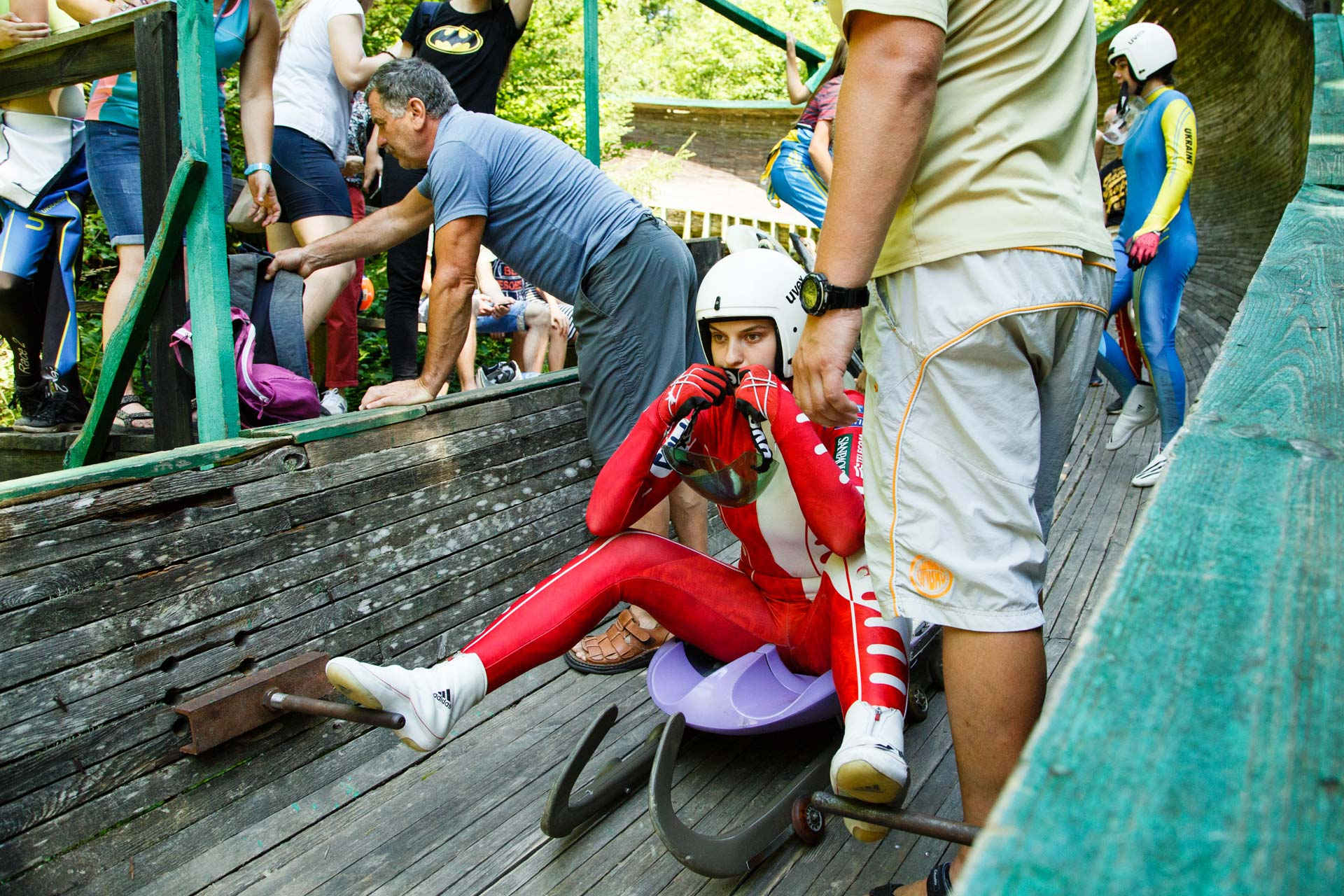
However, when the war began in Ukraine, there was a sharp decrease in the number of participants. According to Baik, Bulgaria was the only foreign country that participated in 2014.
Anatoliy Malyshchyk strongly believes that mountaineering or luge sports (on slopes or in the forest) can be developed in Kremenets. Even cyclists have shown an interest in using the track, although it would first need to be filled up with concrete, to prevent the nails in the beams from getting in the way. According to Malyshchyk, it would be controversial to have recourse to an investor:
“We’re a public organisation; we rent this land. An investor wants to come in and have a portion of the land; they want to invest, while developing their own business on the side.”
The site director believes that no progress will be made in the matter until these issues are resolved by all parties.
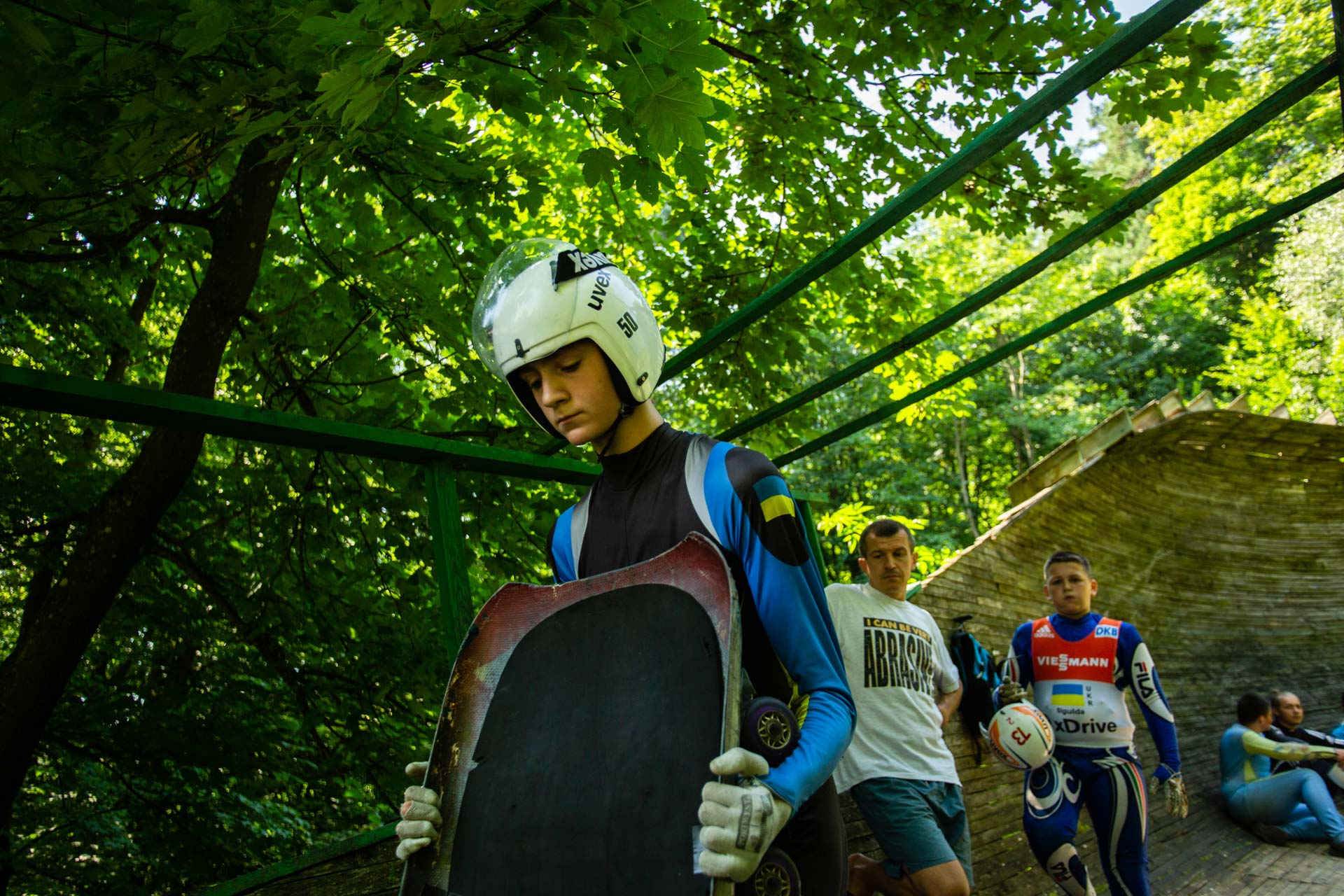
A site for Olympic athletes
The Kremenets Olympic luge training track is the only one of its kind in Ukraine. There used to be another in Vyshhorod, near Kyiv, but it is currently in subpar condition. Lugers can only train seriously in two cities: Lviv and Kremenets. In order to maintain their fitness, athletes practice street luge wherever they can in the summer: in any park that has a slope, or on highways where the traffic can be blocked. Lugers in Lviv, for instance, train in the Prohulianka (‘Promenade’) park. Earlier there was also a track at Lviv’s Shevchenkivskyi Hai (an open-air museum of folk architecture and rural life — ed.); its concrete support beams still remain. Trainer Ivan Baik says:
“Currently, in Ukraine, there are lugers in both the Kremenets school and our Lviv school, both of which belong to the ‘Kolos’ sports club. This is the only club which still has lugers.”
In the winter, all Ukraine’s lugers train in Kremenets or abroad. In 2oo3, the street luge competition was included in the calendar of the International Luge Federation. Since then, the Kremenets track has been operating without interruption. Here, children receive training and competitions are held, including both winter and summer championships. For example, the international ‘Bona Cup’ is held here in August.
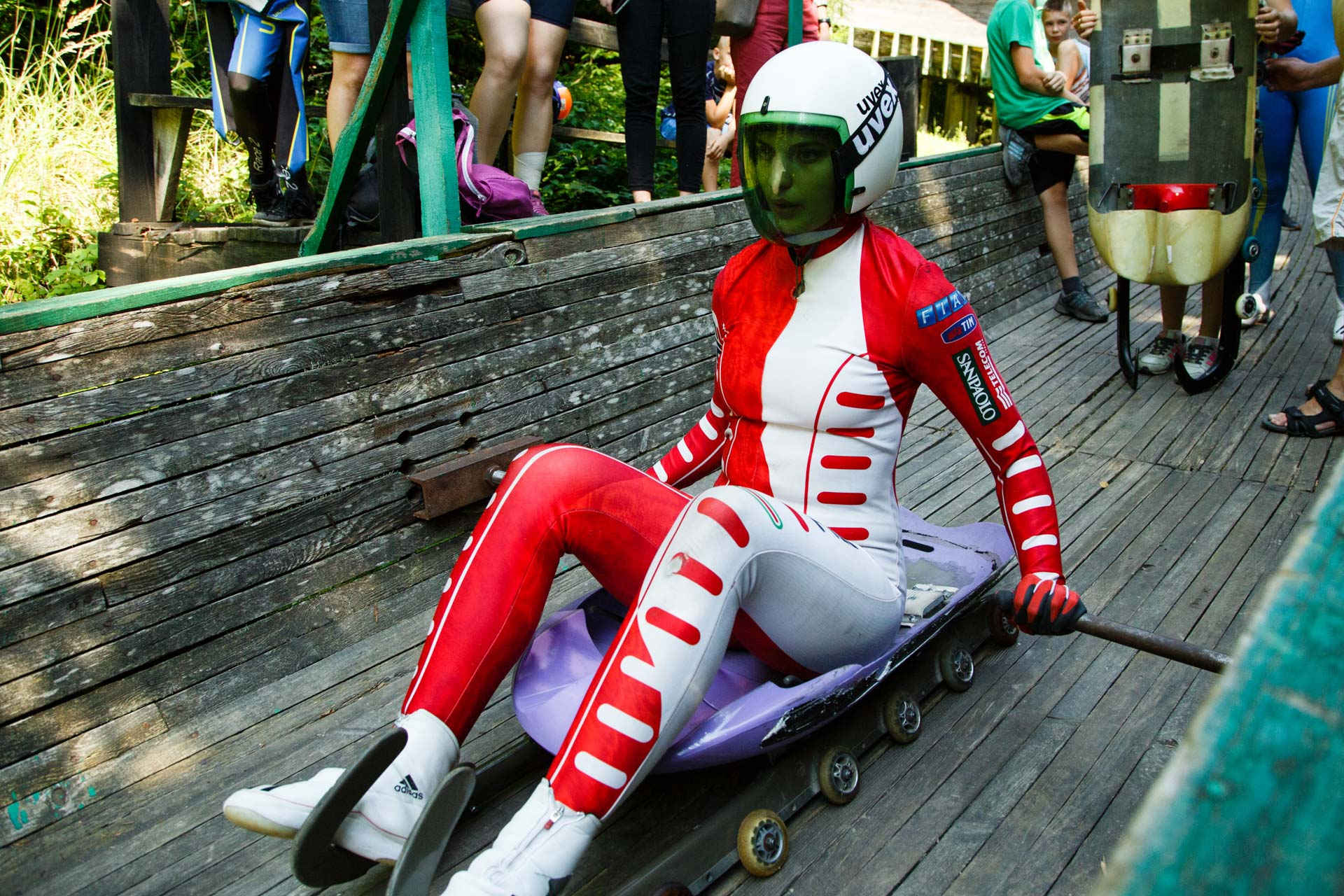
Opportunities for local
While it may be somewhat difficult for lugers from other regions to train here, the track provides a great opportunity for locals to succeed in the sport. After all, they live right next to Ukraine’s only specialised training centre for young Olympic hopefuls. Many parents bring their children here, seeing that it is possible to reach the highest levels of competition. Children can start at the age of nine or 10.
Nearly 80 people engage in luge sports in Kremenets. Ski jumping and cross country skiing are also popular here: these, along with luge, are the main sports developed in the city. In the summer, winter sports give way to football, tennis and rugby. Luge trainer Ivan Baik says his sport is much more difficult logistically, since in order to train, you need a particular location and equipment:
“Football is a game of the masses, as they say, because it’s easy to play: it’s accessible. With luge, you need equipment and a place where you can train.”
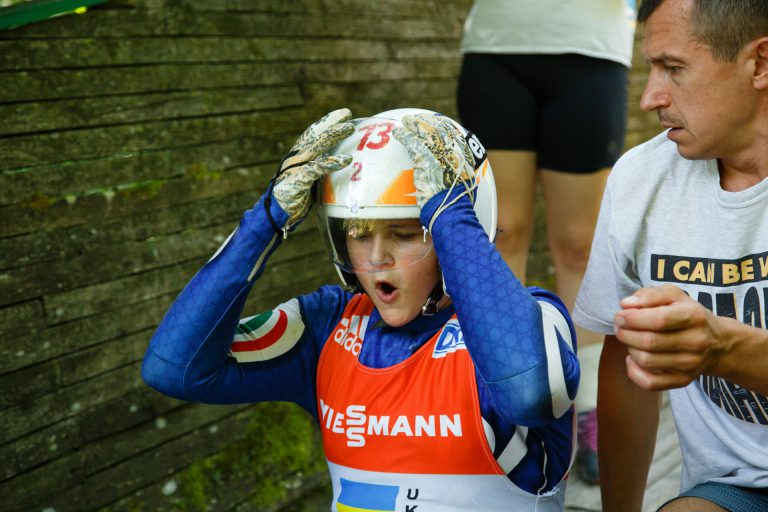
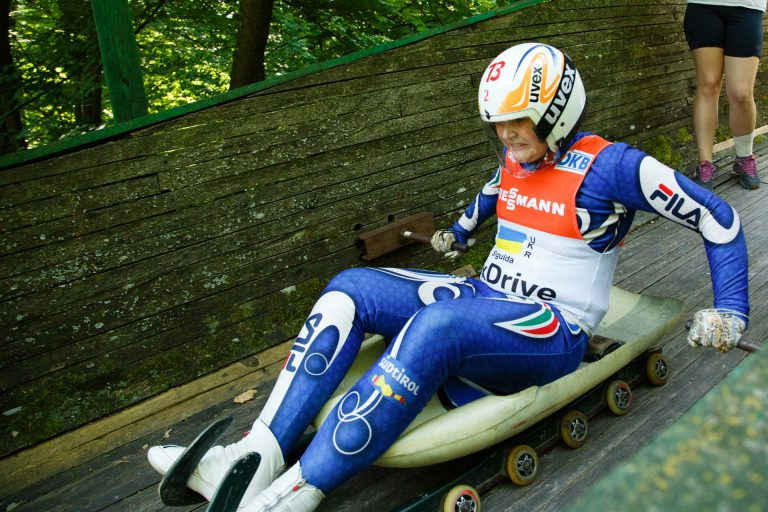
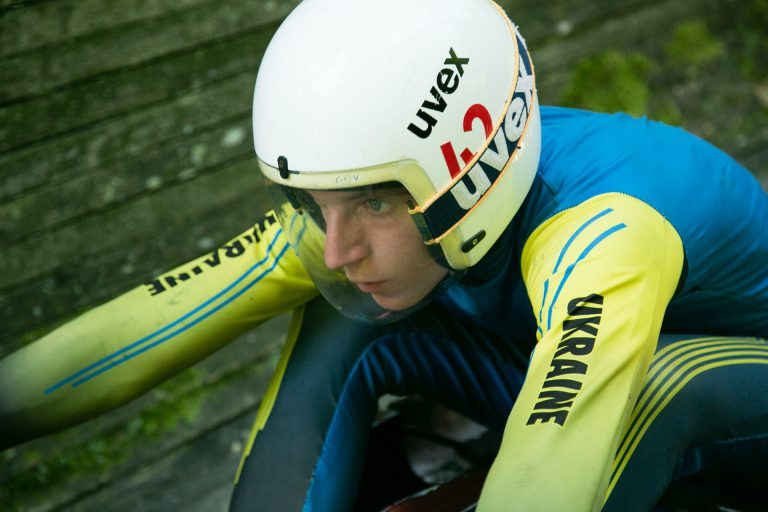
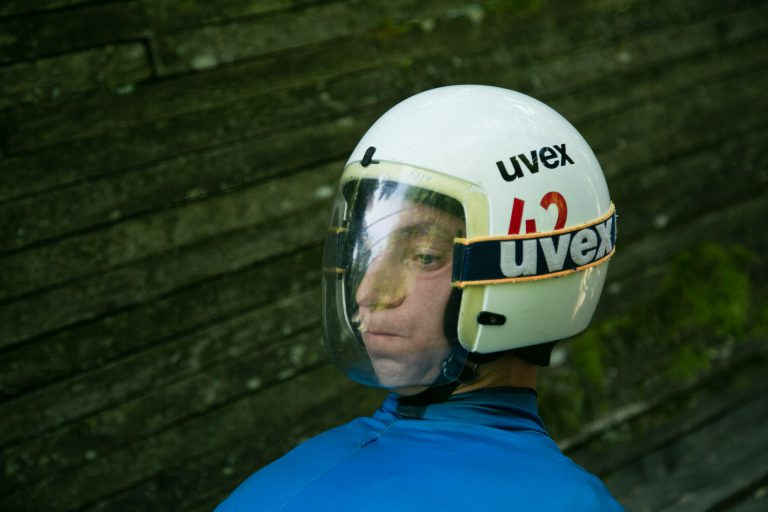
slideshow
Success through practice
Despite the lack of training venues and equipment, the athletes make the best of what they have. It is easier to compete as part of a team; for individual performances, you need to have a good sled. So the boys have learned how to make them. Andriy Mandziy, a member of the Ukrainian luge team who makes his own sleds, says hand-made sleds can even help to achieve better results in competitions. However, some parts must be purchased from abroad — here, his twenty years of experience in the sport come in handy.
Andriy says that he was invited to the Kremenets track by his grandfather, who worked on the territory of the complex:
“Earlier, I started with ski jumping, but since I’m a pretty big, heavy guy, my grandfather said to me: ‘There’s a luge track here, come and try it.’ So I went to the luge track — and it’s true: they need people here like me, who can provide good inertia at the start with their own weight.”
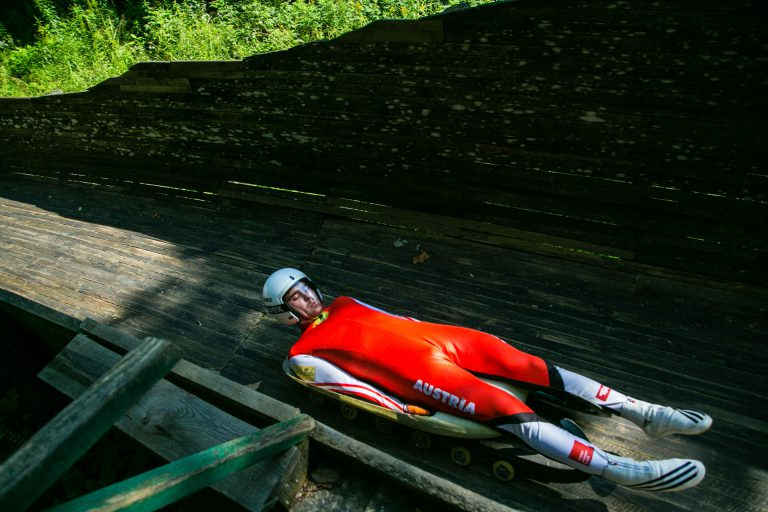
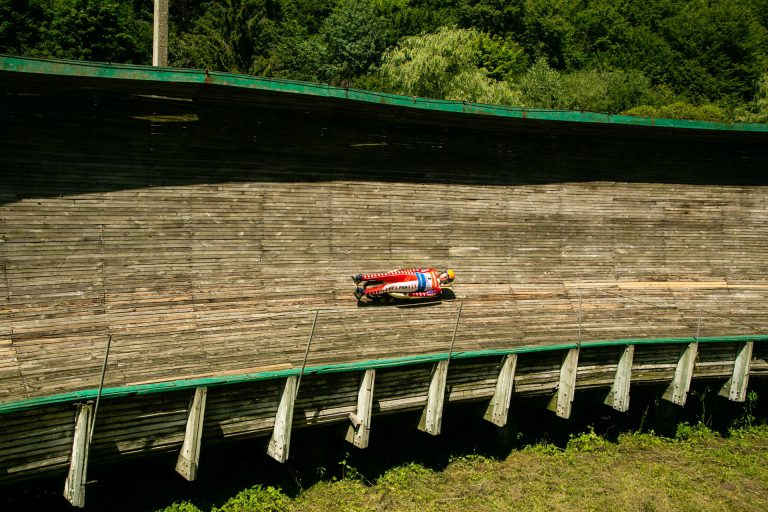
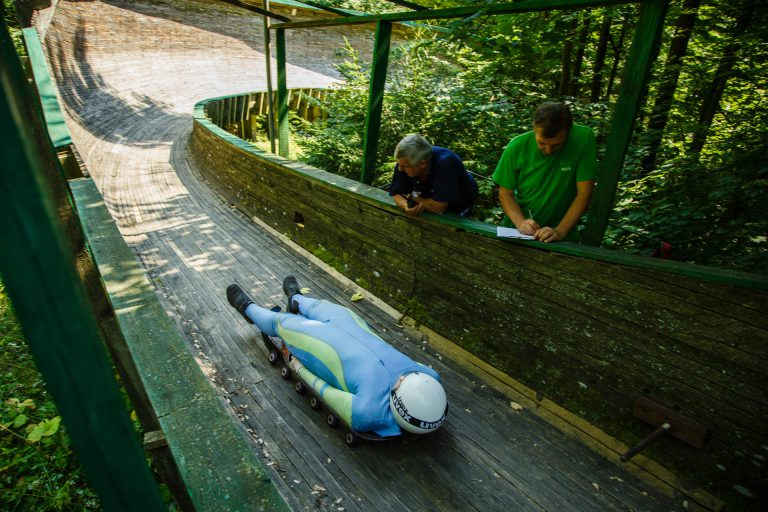
slideshow
For the start, according to Andriy, you need to have explosive strength. In general, a luger needs to be constantly improving their coordination. At first, he trained at a local school; then he went to his first competitions abroad; then, he joined the junior and adult teams.
Currently, there are six athletes on the Ukrainian luge team. Their best result was fifth place at the European Luge Championships. At the Winter Olympics, the Ukrainian team made it to sixth place.
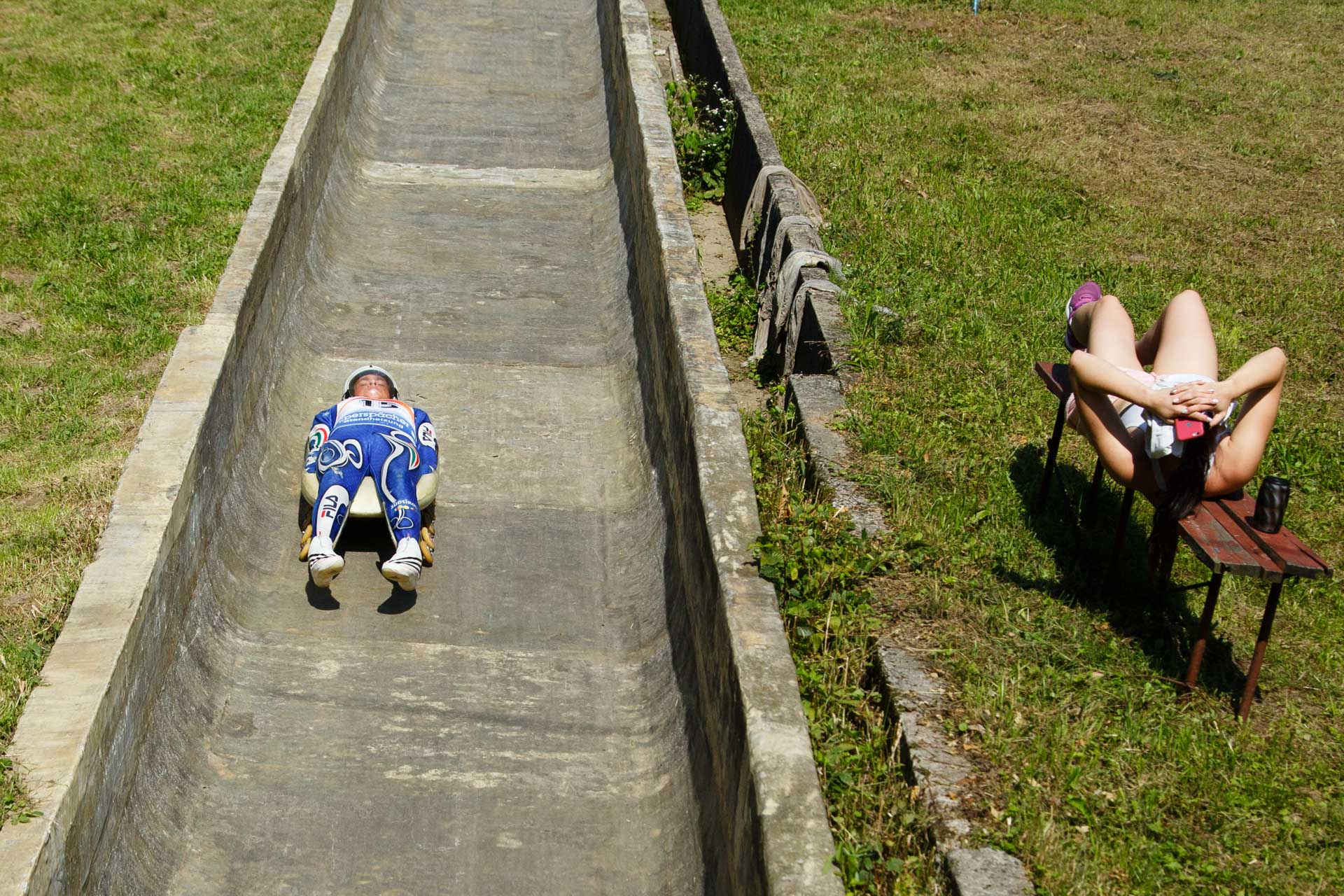
The cradle of luge sports
Anatoliy Malyshchyk came to the Kremenets athletics complex at the invitation of the director. At first, he worked as an instructor, then as a deputy director; since 2007, he has been taking care of the entire complex. With extensive knowledge of the field, he explains how the youngest athletes-in-training practice:
“Now a young athlete can practice luge for three months, then play football, and then come back again in three months. But it’s their choice. If the trainer discovers that an athlete has particular skills, then he will try to convince them to focus on that sport because not everyone can: you need coordination.”
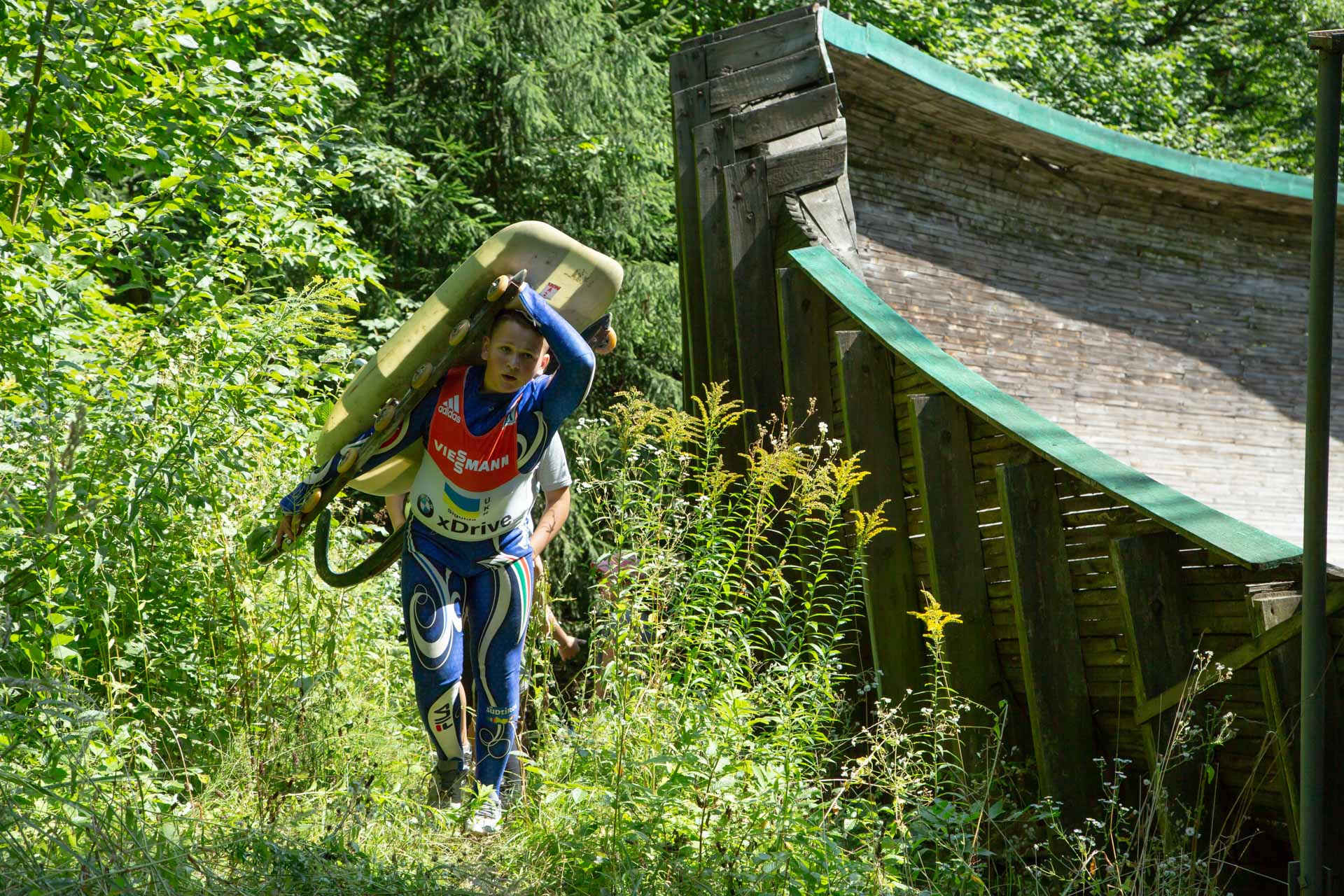
Aside from this, Malyshchyk adds that athletes must be physically strong. After all, they carry their sleds up the mountain themselves because in Kremenets, unlike other venues abroad, there is no lift.
The youngest — aged 10-15 — slide a distance of 500 metres. Boys and girls in the 15-to-17-year-old age group start at 600 metres. Already, the pace and type of training is slightly different. At the next level (juniors, aged 18-20), the distance is 700 metres. For adult athletes, it is 800 to 1,000 metres.
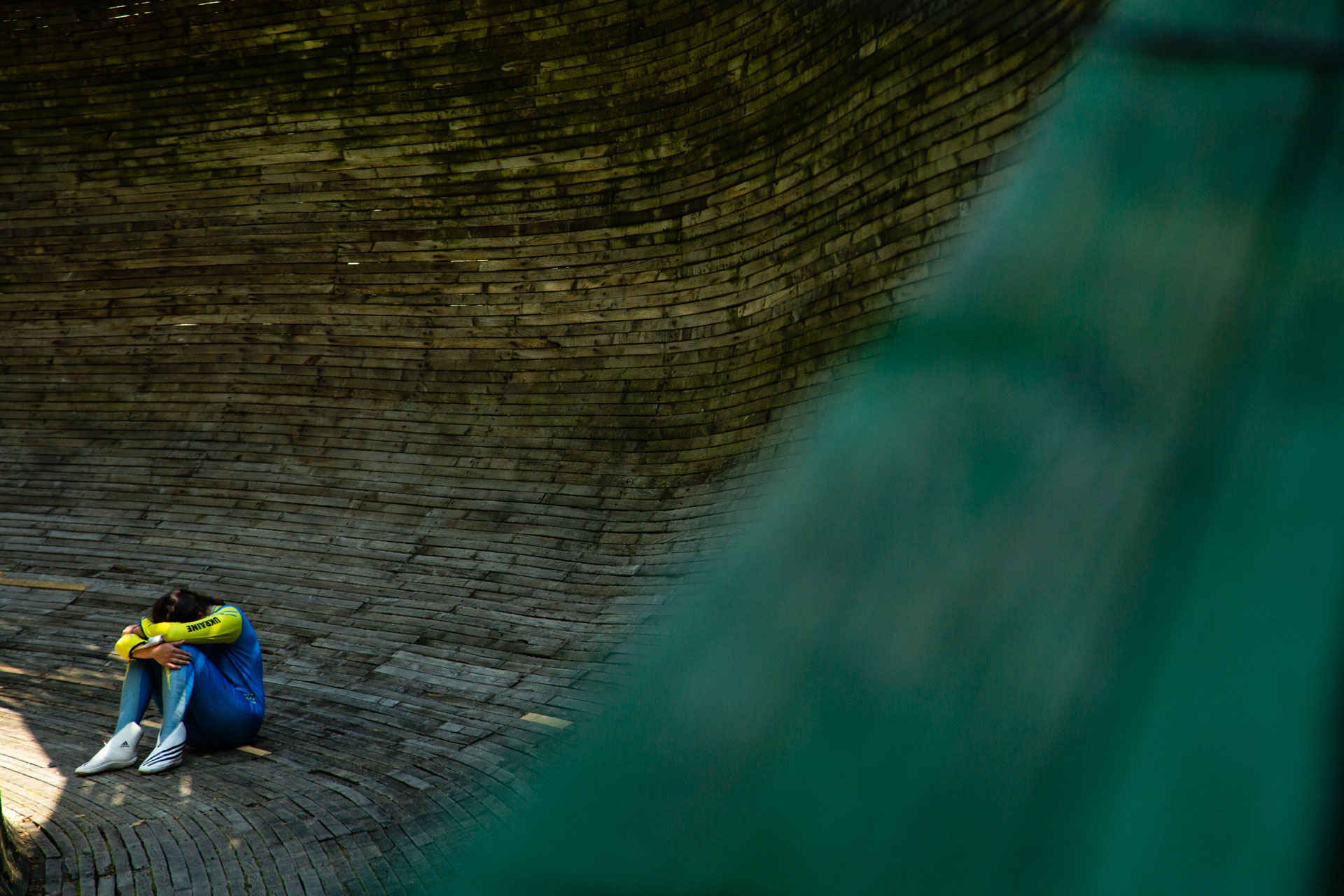
In practice, the site is held together by the enthusiasm of the athletes and the management, as it is owned by a public organisation and receives virtually no funding. The local authorities are not ready to finance it at this time. In order for the track to meet today’s conditions and international standards, it needs to be concreted over.
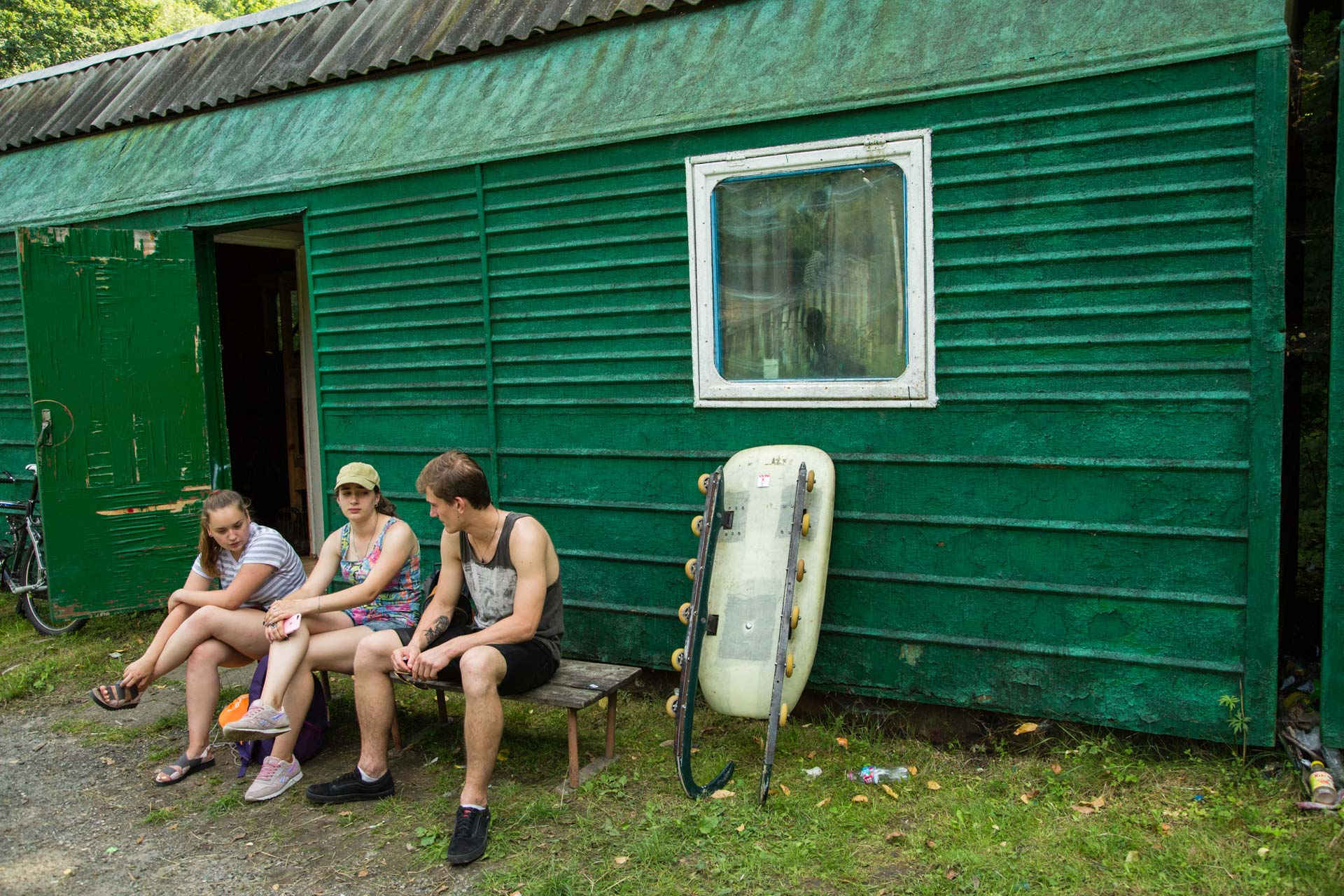
While cardinal changes are taking place at the national level — in terms of the division of responsibility and funding — Ukrainian lugers continue to train and master their repertoire. Trainer Ivan Baik says the athletes are independently studying sled design and trying to learn from their experienced foreign counterparts. Lugers usually spare no expense when it comes to personal development, if they can afford it. And despite all obstacles, the Kremenets luge track continues to be a venue for year-round training and international-level competitions.

